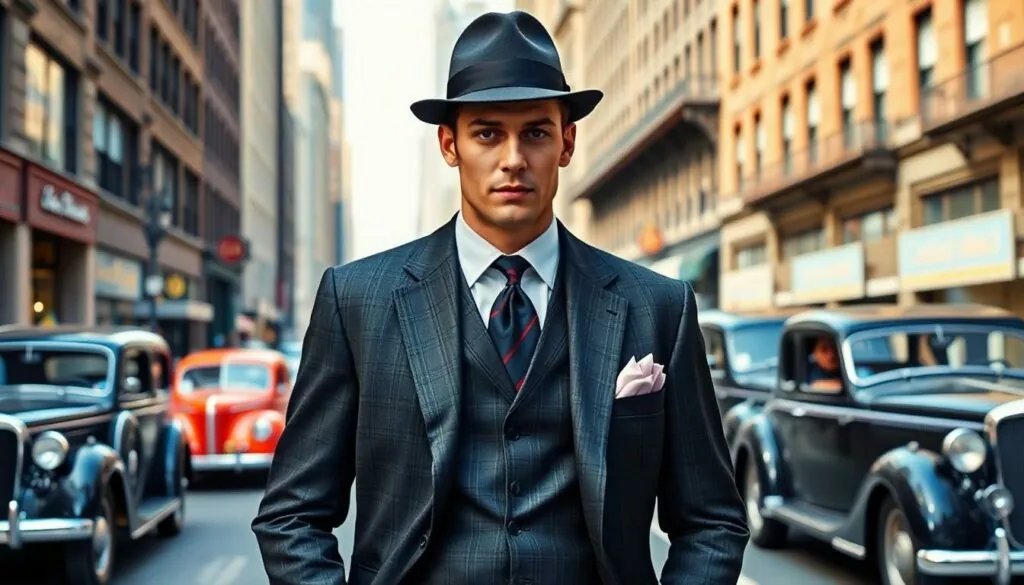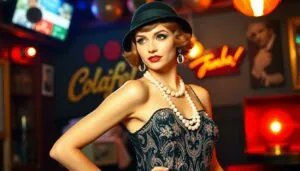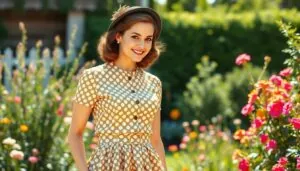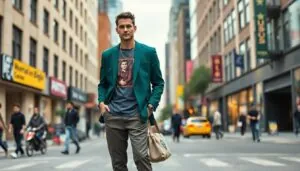Step back in time to the roaring twenties, where men traded their stiff collars for dapper suits and the jazz age turned fashion into a lively dance. This was a decade where style wasn’t just about looking good; it was a statement, a celebration of freedom and flair. From sharp pinstripes to flamboyant accessories, the 1920s offered a playground for the fashion-forward man who wasn’t afraid to stand out.
Table of Contents
ToggleOverview Of 1920s Men’s Fashion
The 1920s marked a significant shift in men’s fashion, characterized by a mix of elegance and modernity. This decade embraced individual expression through varied styles and bold accessories.
Influences On Fashion Trends
Cultural movements and societal changes greatly impacted fashion trends. The Jazz Age introduced lively music and dance, influencing clothing wear. Innovations in textile manufacturing made fabrics like silk and wool widely available. Movies and celebrities popularized styles that emphasized leisure and sophistication. Sportswear began to gain prominence, as active lifestyles demanded functional yet fashionable attire.
Key Designers Of The Era
Several designers spearheaded this transformative period. Paul Poiret challenged the norms of tailored suits by introducing loose fits and vibrant colors. Edward Molyneux gained fame for his elegant evening wear that captured the spirit of the elite. Coco Chanel revolutionized menswear by merging comfort with style, showcasing simplicity in design. These designers played pivotal roles in shaping the landscape of 1920s men’s fashion.
Essential Wardrobe Pieces
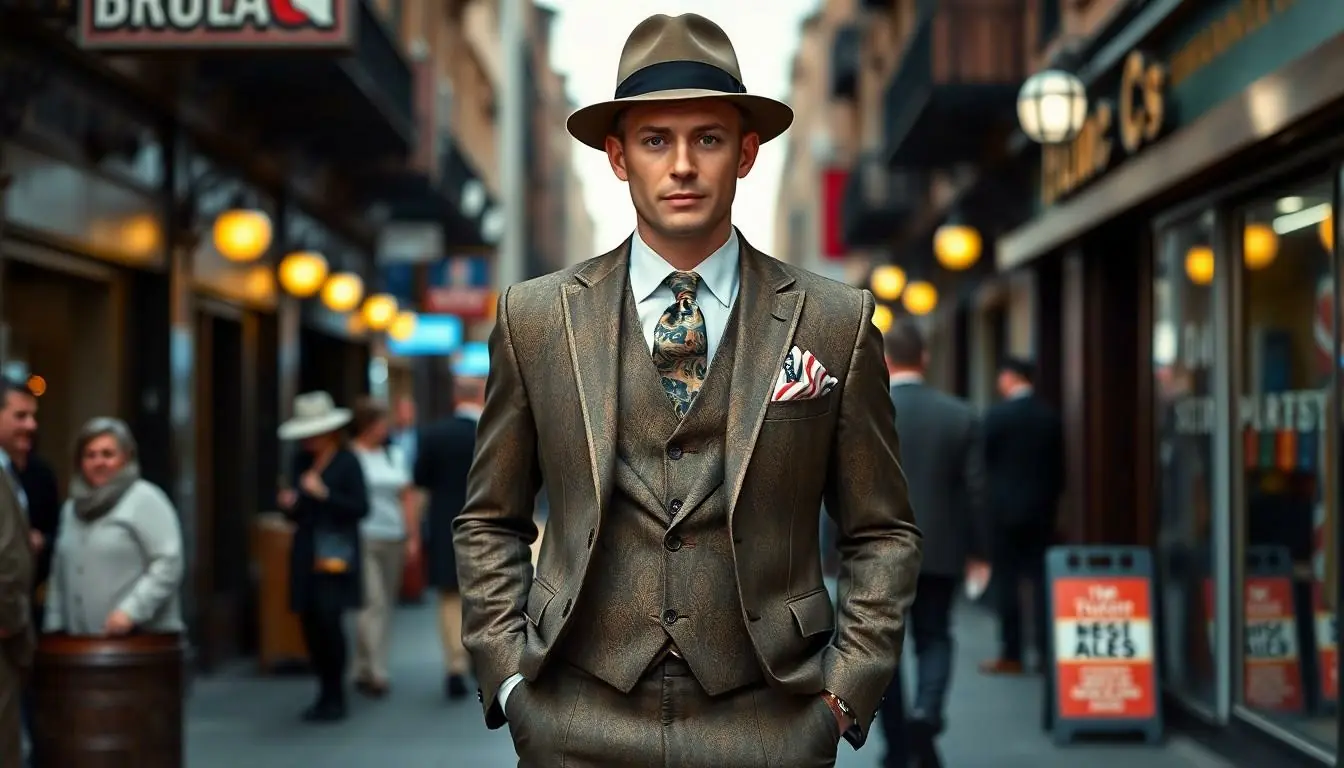
The 1920s featured distinct wardrobe pieces that defined men’s fashion during the decade. Stylish suits and adaptable casual wear emphasized individuality and sophistication.
Suits And Tailoring
Suits epitomized 1920s men’s fashion with their structured designs and elegant fits. Two-piece and three-piece suits gained popularity, typically made from lightweight fabrics such as tweed and linen. Tailored jackets showcased stronger shoulders and flatter cuts, creating a refined silhouette. Vivid colors and patterned fabrics also emerged, allowing for personal expression. Accessories like pocket squares, bow ties, and fedoras completed the look, enhancing the overall ensemble.
Casual Attire
Casual attire represented a shift in daily wear, aligning with active lifestyles and relaxed social norms. Knitted sweaters and polo shirts became staples for informal gatherings. Trousers transitioned from overly formal to more versatile options, often featuring pleats and a looser fit. Lightweight jackets, such as blousons, paired well with casual outfits, reflecting the emerging sportswear trend. This attire illustrated a break from tradition, paving the way for modern men’s fashion.
Accessories That Defined The Decade
Accessories in the 1920s played a crucial role in exemplifying men’s fashion, showcasing personal style and sophistication.
Hats And Caps
Fedoras emerged as iconic accessories during the 1920s, favored for their stylish yet practical designs. These hats featured wide brims and a pinched crown, appealing to the fashion-forward man. Flat caps, known for their casual charm, offered an alternative for everyday wear. Bowler hats, characterized by their rounded crowns, maintained a sense of formality and were often associated with the upper class. Each type of headwear contributed to the era’s aesthetic, allowing men to express individuality while adhering to social norms.
Footwear Styles
Footwear in the 1920s ranged from classic dress shoes to more casual options. Oxfords stood out as the go-to choice for formal occasions, available in various colors and materials. Brogues added character with their decorative perforations, making them popular among trendy men. Loafers introduced a comfortable yet sophisticated alternative, becoming essential for informal settings. Athletic shoes also gained popularity, reflecting the decade’s embrace of sportswear and active lifestyles, facilitating a blend of comfort and style.
Iconic Styles And Trends
The 1920s introduced exceptional styles and trends in men’s fashion that reflected cultural shifts and modernity. Notably, the influence of the Jazz Era pervaded clothing choices, marking a distinctive change in how men expressed individuality.
The Jazz Era Influence
Jazz music played a pivotal role in shaping 1920s men’s fashion. Vibrant colors and bold patterns became synonymous with this lively cultural movement. Men’s suits took on bolder colors, like deep blues and vibrant greens, often adorned with unique prints. Tailored pieces featured a more relaxed silhouette, aligning with the carefree spirit of the era. This transition from rigidity to vibrancy allowed men to showcase their personalities. Key figures in the jazz scene also inspired fashion choices, leading to the adoption of flamboyant accessories such as pocket squares and flashy ties.
Sportswear And Leisure Styles
The rise of sportswear in the 1920s marked a departure from traditional attire, promoting comfort and practicality. Comfortable, tailored pieces became essential for leisure activities. Knitted sweaters, polo shirts, and loose-fitting trousers emerged as staples for casual gatherings. Lightweight fabrics encouraged movement and embraced unstructured styles that suited the active lifestyle of the decade. Men paired blouson jackets with casual trousers, creating versatile ensembles for both leisure and informal events. This shift marked a significant evolution in men’s fashion, reinforcing the trend toward relaxed elegance and personal expression.
The 1920s marked a pivotal moment in men’s fashion where individuality and self-expression flourished. As styles evolved from formal to more relaxed, men embraced vibrant colors and bold patterns that reflected the spirit of the Jazz Age. This era introduced innovative designs and practical sportswear that catered to a more active lifestyle.
Key figures in fashion played significant roles in shaping these trends, creating a lasting impact on menswear. Accessories became essential in showcasing personal style, further enhancing the sophistication of the decade’s fashion. Ultimately, the 1920s laid the foundation for modern men’s fashion, celebrating a blend of elegance and comfort that continues to influence styles today.

